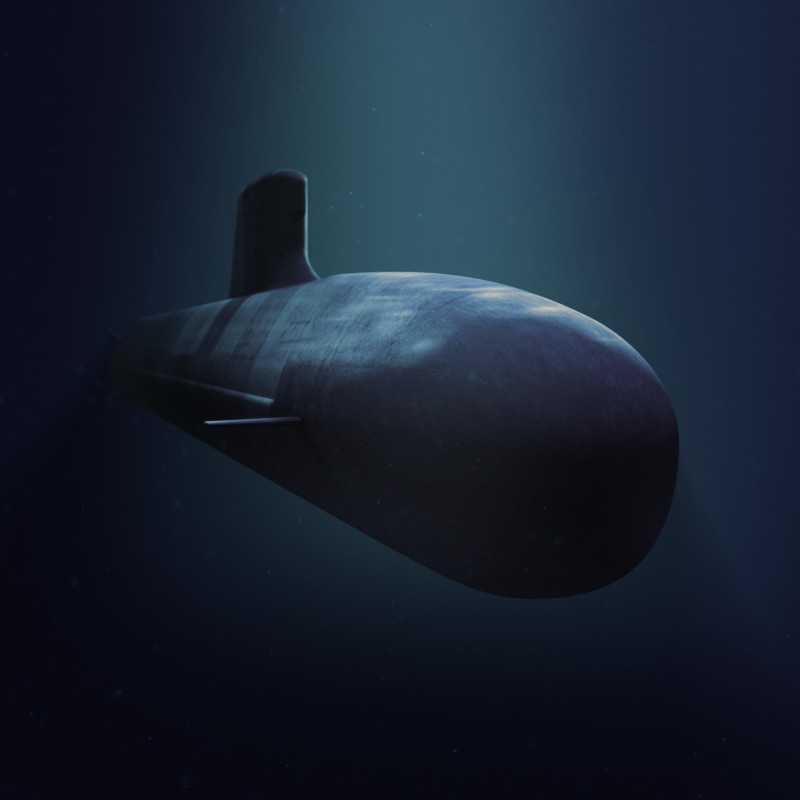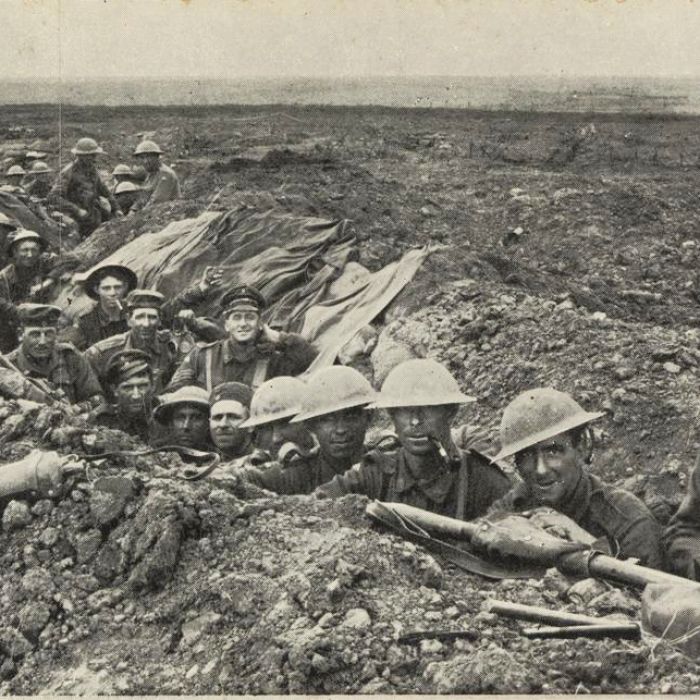Australia needs leadership. Bold, effective leadership has proven decisive in times when Australia has been at war.
This is a time for such leadership in the strategic selection in Australia’s Future Submarine Project for the right submarine fleet for our Royal Australian Navy for decades ahead – 1. for the crews who will proudly command it, 2. for the crews who will proudly help build and maintain it, and 3. at Osborne in Adelaide mate!
Various reports from our Defence have strongly confirmed that the French option is the superior for Australia on all counts across these three concerns. Listen to the troops.
“I don’t care a damn for your loyal service when you think I am right; when I really want it most is when you think I am wrong.”
[Australia’s greatest commander to date, General Sir John Monash GCMG, KCB, VD (1865 – 1931) ]
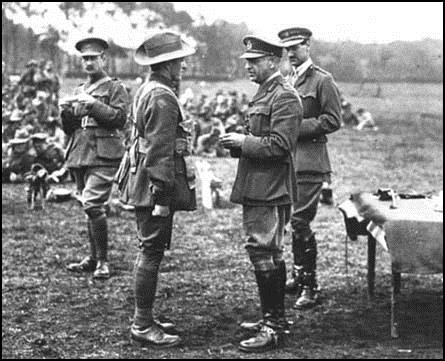 As Commander of the Australian Corps, then Lieutenant General John Monash presents a decoration to a Digger following after the Battle of Le Hamel (The Somme) in July 1918 – “the textbook victory“
As Commander of the Australian Corps, then Lieutenant General John Monash presents a decoration to a Digger following after the Battle of Le Hamel (The Somme) in July 1918 – “the textbook victory“
France’s DCNS Barracuda attack submarine class is the world’s best. We should get it.
DCNS stands for ‘Direction des Constructions Navales Services‘, basically the Royale French Navy’s naval defence company – the sovereign naval shipbuilding company of France. DCNS is Europe’s unparalleled leader in naval defence capability. The firm employs more than 12,500 people globally, boasts turnover of €3.04 billion and has built 100 submarines for nine different countries. DCNS is the only submarine design company in the world to have design competencies in nuclear and conventional submarines, safely delivering submarines ranging from 2,000 tonnes to 14,000 tonnes to navies all around the world.
DCNS has already consulted some hundreds of Australian companies and has identified more than 50 candidate projects for new innovations within Australia. And France is a proven innovator in Australia. Through companies like Thales, Safran and Schneider, France has already successfully transferred technology to Australian companies for sonars, armoured vehicles, jet engines, satellites, ships, electronic equipment, air traffic management and much more.
DCNS devotes 10% of its revenue to research and development every year, and encourages innovation in all of its work with subcontractors, small and medium-sized companies, scientific laboratories and industrial groups.
Head of France’s DCNS Australia, Sean Costello, says France is a complete submarine power that can safely design, build, operate and sustain any class of submarine on an enduring basis.
France is offering Australia the ‘Shortfin Barracuda Block 1A‘ design, a modified conventionally powered version of its new nuclear Barracuda submarine fleet, fully designed, tested and proven by DCNS specifically for the Royal Australian Navy. It has France’s most sensitive and protected submarine technology and will be the most lethal conventional submarine ever contemplated. Its proprietary pump jet propulsion provides stealth technology with tactical advantage over submarines with obsolete propeller technology. The sonar suite performance provided by Thales will be the best available ever for a submarine this size.
Australia must have the ability to operate, sustain, maintain and upgrade Australia’s submarine force on an enduring basis. And DCNS ticks all the boxes to deliver our Navy with an affordable, regionally superior, conventional submarine capability, sustainable into the foreseeable future.
Watch DCNS’s Shortfin Barracuda video:
https://youtu.be/dXRWGeMoHpM
The ultimate achievement of Australian independence in the area of submarine technology will be a long term strategy. Having first class equipment at this time bridges an important gap.
The purchase of French equipment may serve too to link Australia to the Eternal France, to the French Nation with its proud military traditions and which now needs to rally to preserve itself in new dark times.
ANZACs have a connection to France back to battlegrounds like Fromelles and Villers-Bretonneux on the Somme on the Western Front. We lost almost 60,000 Australians a generation of our best in The Great War; most of these deaths (45,000) were on the Western Front. A further 124,000 were wounded (sometimes multiple times). On the 24 April 1918, 1200 Australians died liberating the French village of Villers-Bretonneux from the invading Germans. It was a turning point of the war.
After the war, and particularly after the battles of 1918, the locals of Villers-Bretonneux and the people of France promised to always honour and remember the sacrifices of the Australians who helped liberate them.
In 1921, Marshal Foch, a French general during the war, reflected that ‘the passionate valour of the Australians served as an example to the whole world
“You saved Amiens, you saved France. Our gratitude will remain ever and always to Australia”.
The Australian National Memorial was opened in 1938 on a hill overlooking Villers-Bretonneux and the Somme Valley. As well as the graves of many Australians and others from Commonwealth nations, it lists 11,000 names of Australians with no grave.
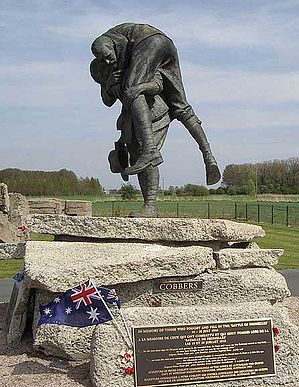 WWI memorial in Fromelles, The Somme, France dedicated to the Australian soldiers who died at the Battle of Fromelles, 1916
WWI memorial in Fromelles, The Somme, France dedicated to the Australian soldiers who died at the Battle of Fromelles, 1916
Lest We Forget
By 1920 cities and towns across Australia were ‘adopting’ French towns that had been scarred by war. The City of Melbourne adopted Villers-Bretonneux.
Using the slogan ‘By Diggers defended, by Victorians mended’, an appeal went out to the people of Melbourne to help their friends in France. The town, in ruins by the end of war, had been devastated.
School children were urged to each donate one penny to the cause, yet businesses, church groups, women’s leagues and RSL groups across the nation responded. In all 10,000 pounds sterling was raised and then matched by the Victorian Department of Education.
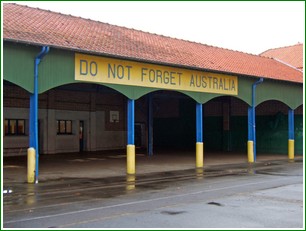 Villers-Bretonneux primary school playground today
Villers-Bretonneux primary school playground today
Today in the town, there is a great deal of evidence that the relationship forged between Australians and the people of the area is still strong.
Memorials and plaques recall the bravery and selflessness of the Australians who fought there. The town hall flies the French and Australian flags and the building itself is decorated with kangaroos. On a hilltop nearby, the white tower of the Australian National Memorial is visible in the distance.
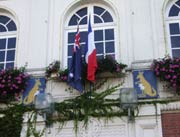 The exterior of Villers-Bretonneux town hall today.
The exterior of Villers-Bretonneux town hall today.
General Monash, our most brilliant military tactician, supported the view that the most effective warfare involved many different types of weaponry and defences working together – the whole being greater than the sum of its parts.
Caveat: Nothing should be purchased with borrowed money; just like our frugal forebears did, we need to live within our means.
